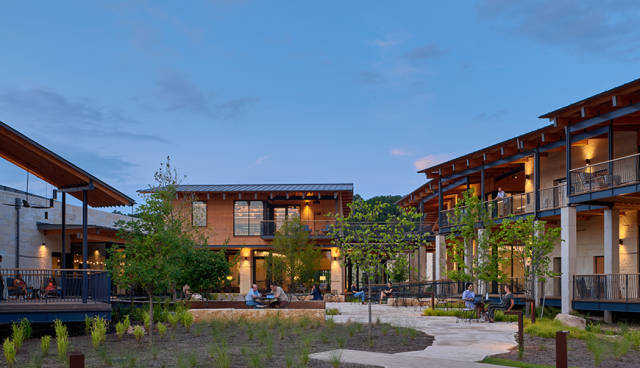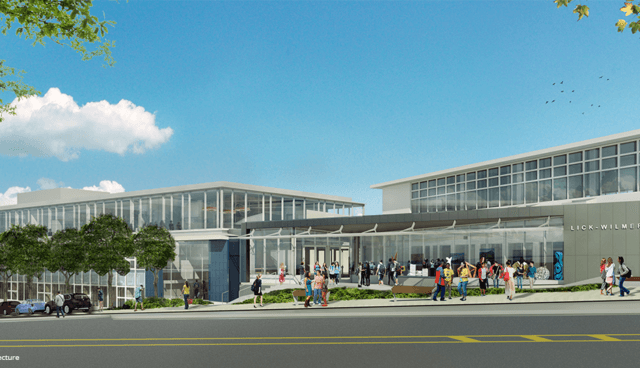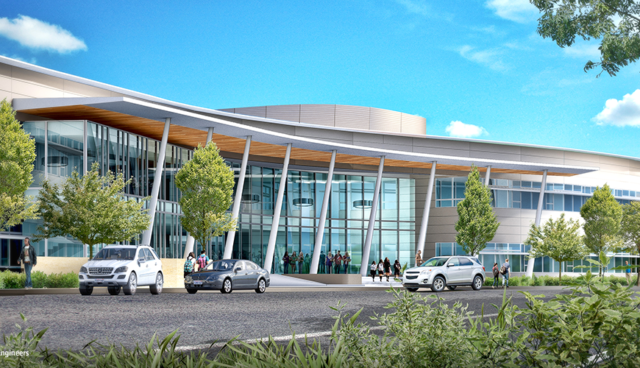The University of Nottingham | Orchard Hotel

The Orchard Hotel is a visually stunning facility designed by RHWL Architects to meet the University of Nottingham’s requirements. It holds a 200-bedroom, mid-market hotel to complement the adjacent East Midlands Conference Centre and give visiting academics, student families, local business people, and conference guests a memorable stay on the beautiful University Park campus.
The design team was inspired by the site’s sloping location, adjacency to an orchard, and clusters of Regal Oak trees. The scheme engages with the site’s surroundings, offering a clear link between the conference center, the parkland, and beyond, offering a relaxed environment for socializing, relaxing, and working. The client was provided with an iconic statement scheme shrouded with efficient, sustainable design principles.
Elementa Consulting’s engineering and BREEAM Excellent scheme have centered around a team-focused, well-coordinated, energy-efficient, and sustainable approach. Due to the strict sustainable principles of the University, Elementa Consulting used several renewable technologies to achieve an overall 20% saving in the building’s CO₂ in operation, including ground source heat pumps, photovoltaics, bespoke sustainable urban drainage system, and combined heat and power.
Our building energy modeling team worked closely with the whole design team to overcome design issues, demonstrate compliance with regulations, investigate building performance and assist with the generation of appropriate certification. We facilitated workshops and undertook feasibility studies. The scheme was initially developed from an entirely passive earth tube design removing the need for air-conditioning, but due to site and brand constraints, the scheme had to be adapted to suit. The systems chosen have been carefully selected to work at peak efficiency while offering the best value to the client and the environment. This works side-by-side with a building of high thermal mass, low air permeability of 3, and EPC rating of 28/B, which has been designed to be flexible for future refurbishment and alternative uses.
The design team followed the energy hierarchy of “be lean, be clean, and be green.” The result is a holistic response that combines intelligent passive design with relevant renewable energies and active technologies, minimizing the need for bolt-on greenwash services.
Key features include:
- Bedroom wings are oriented to face north and south to allow easier control of sunlight and solar glare, encouraging natural light.
- High-performance building envelope with U Values targets not exceeding 0.15 W/m²K for external walls and 0.1 W/m²K for floors and roofs.
- Air Handling Units (AHUs) use a high-efficacy thermal wheel to recuperate heat.
- Lighting provided from energy-efficient lamp sources with absence detection and other efficiency measures.
- Heating and cooling predominantly mix ground source heat pumps with high-efficiency variable refrigerant volume systems.
- Combined Heat and Power (CHP) units are used as the lead heat source for the remaining low-temperature hot water heating and domestic hot water generation, providing electrical power for the building.
- 60 sq m of photovoltaic panels situated
- 1,600 sq m of biodiverse green roofs
- A building energy management system monitors the differing energy usages, controlling the central plant and interfacing with the campus-wide system.
The projected energy savings provided by the passive design measures is 7.38%. Active technologies, CHP, ground source heat pumps, and photovoltaics will reduce energy consumption by a further 11.38% and carbon emissions by an additional 21.64%, exceeding the 2010 Part L Building Regulations.
This project was shortlisted for a 2015 CIBSE Building Performance Award in the New Build (over £10m) category.






